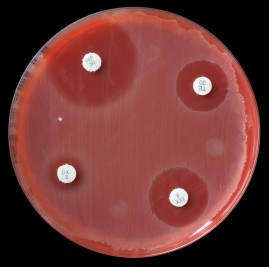 This month saw the publication of a UK Department of Health report on the growing problem of antimicrobial resistance, which included the shocking recommendation that antimicrobial resistance be added to the UK government list of threats to national security alongside terrorism and pandemic flu. In this report, Professor Dame Sally Davies, Chief Medical Officer for the UK, focused on the increasing problem of multidrug resistant organisms–raising the profile of an important issue that many scientists and health-care professionals have warned us about before. A March 12 Nature editorial welcomed the recommendations as a sign that policy makers in the UK are taking the threat of antimicrobial resistance seriously and are prepared to take more steps to address the problem of multidrug-resistant organisms. Continue reading “Antibiotics and Honey–An Old Solution for a New Problem”
This month saw the publication of a UK Department of Health report on the growing problem of antimicrobial resistance, which included the shocking recommendation that antimicrobial resistance be added to the UK government list of threats to national security alongside terrorism and pandemic flu. In this report, Professor Dame Sally Davies, Chief Medical Officer for the UK, focused on the increasing problem of multidrug resistant organisms–raising the profile of an important issue that many scientists and health-care professionals have warned us about before. A March 12 Nature editorial welcomed the recommendations as a sign that policy makers in the UK are taking the threat of antimicrobial resistance seriously and are prepared to take more steps to address the problem of multidrug-resistant organisms. Continue reading “Antibiotics and Honey–An Old Solution for a New Problem”
Author: Isobel Maciver
DNA Purification, Quantitation and Analysis Explained
 Yesterday I listened in on the Webinar “Getting the Most Out of Your DNA Analysis from Purification to Downstream Assays”, presented by Eric Vincent–a Product Manager in the Promega Genomics group.
Yesterday I listened in on the Webinar “Getting the Most Out of Your DNA Analysis from Purification to Downstream Assays”, presented by Eric Vincent–a Product Manager in the Promega Genomics group.
This is the webinar for you if you have ever wondered about the relative advantages and disadvantages of the many methods available for DNA purification, quantitation and analysis, or if you are comparing options for low- to high-throughput DNA purification. Eric presents a clear analyses of each of the steps in a basic DNA workflow: Purification, Quantitation, Quality Determination, and Downstream Analysis, providing key considerations and detailing the potential limitations of the methods commonly used at each step.
The DNA purification method chosen has an affect on the quality and integrity of the DNA isolated, and can therefore affect performance in downstream assays. Accuracy of quantitation also affects success, and the various downstream assays themselves (such as end-point PCR, qPCR, and sequencing) each have different sensitivities to factors such as DNA yield, quality, and integrity, and the presence of inhibitors. Continue reading “DNA Purification, Quantitation and Analysis Explained”
Sonnets in DNA
 For sixty years now, scientists have studied the role of DNA as a vehicle for the storage and transmission of genetic information from generation to generation. We have marveled at the capacity of DNA to store all the information required to describe a human being using only a 4-letter code, and to pack that information into a space the size of the nucleus of a single cell. A letter published last week in Nature exploits this phenomenal storage capacity of DNA to archive a quite different kind of information. Forget CDs, hard drives and chips, the sum of human knowledge can now be stored in synthetic DNA strands. The Nature letter, authored by scientists from the European Bioinformatics Institute in Cambridge, UK, and Agilent Technologies in California, describes a proof-of-concept experiment where synthetic DNA was used to encode Shakespeare’s Sonnets, Martin Luther King’s “I Have a Dream” speech, a picture of the Bioinformatics Institute, and the original Crick and Watson paper on the double-helical nature of DNA. Continue reading “Sonnets in DNA”
For sixty years now, scientists have studied the role of DNA as a vehicle for the storage and transmission of genetic information from generation to generation. We have marveled at the capacity of DNA to store all the information required to describe a human being using only a 4-letter code, and to pack that information into a space the size of the nucleus of a single cell. A letter published last week in Nature exploits this phenomenal storage capacity of DNA to archive a quite different kind of information. Forget CDs, hard drives and chips, the sum of human knowledge can now be stored in synthetic DNA strands. The Nature letter, authored by scientists from the European Bioinformatics Institute in Cambridge, UK, and Agilent Technologies in California, describes a proof-of-concept experiment where synthetic DNA was used to encode Shakespeare’s Sonnets, Martin Luther King’s “I Have a Dream” speech, a picture of the Bioinformatics Institute, and the original Crick and Watson paper on the double-helical nature of DNA. Continue reading “Sonnets in DNA”
My Microbiome Made Me Do It
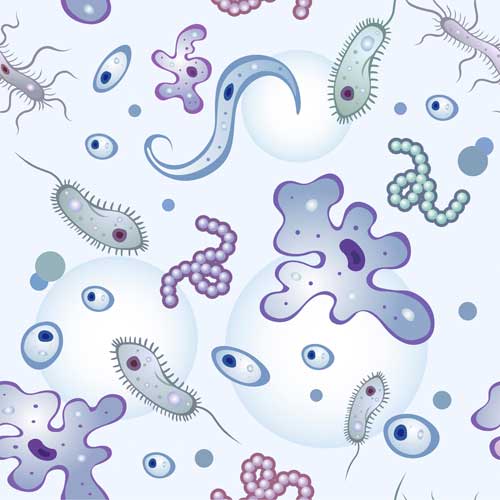
When I was in school I learned that there were two different kinds of bacteria, the nasty ones (pathogens) that could make you sick and the nice ones (commensals), which simply colonized you and did nothing much except occupy a spot that could otherwise be taken up by a pathogen. Any role for those commensal bacteria in health and disease was assumed to be no more than that of a harmless squatter. In recent years, studies of this benign microbial population (microbiome studies) have begun to reveal many more intriguing details about how they affect our health and wellbeing. Maybe it’s not so surprising that “good” bacteria could be good for our health—but could they actually affect how we behave? A review in Science summarized findings that indicate that this is indeed the case—at least for certain animal populations. Could it be true for humans as well? Could our colonizing organisms actually influence how we feel and what we do?
Continue reading “My Microbiome Made Me Do It”Molecular Connections Between Sleep Deprivation and Inflammation
 Anyone who has travelled across time zones knows how unpleasant it is when the regular rhythm of your biological clock is disrupted. Jetlag results when the body’s internal clock, or circadian rhythm is out of sync with external cues for “day and “night”, resulting in insomnia, extreme tiredness, difficulty concentrating and various other unpleasant symptoms.
Anyone who has travelled across time zones knows how unpleasant it is when the regular rhythm of your biological clock is disrupted. Jetlag results when the body’s internal clock, or circadian rhythm is out of sync with external cues for “day and “night”, resulting in insomnia, extreme tiredness, difficulty concentrating and various other unpleasant symptoms.
On the bright side, jetlag is at least a temporary misery that is usually over after a few days of acclimation to the new time zone. Long-term disruption of the natural sleep/wake cycle, such as encountered by frequent long-distance travellers, shift workers, or people with physiological conditions that affect circadian rhythms, can be much more debilitating. Longer term health effects that have been associated with constant disruption of circadian rhythms include, insomnia, concentration problems, and increased susceptibility to diseases associated with chronic inflammation such as cancer, diabetes and cardiovascular disease.
Despite the fact that many of the genes and proteins involved in central control of circadian rhythms are known, the reason for the implied association between circadian clock components and immune function is not understood. Recently, a paper was published in the July issue of PNAS that identified a potential link between a circadian clock component and chronic inflammation. Continue reading “Molecular Connections Between Sleep Deprivation and Inflammation”
Methods for Determining DNA Yield and Concentration
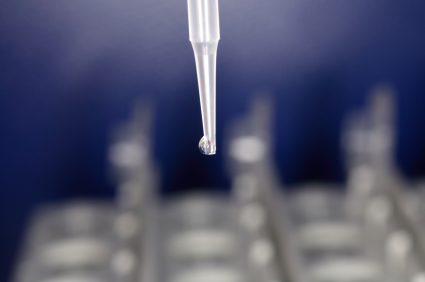
This post is provided as a general introduction to common laboratory methods for determining the yield and purity of purified DNA samples. DNA yield can be assessed using various methods including absorbance (optical density), agarose gel electrophoresis, or use of fluorescent DNA-binding dyes. All three methods are convenient, but have varying requirements in terms of equipment needed, ease of use, and calculations to consider.
Continue reading “Methods for Determining DNA Yield and Concentration”Poisoners and Scientists
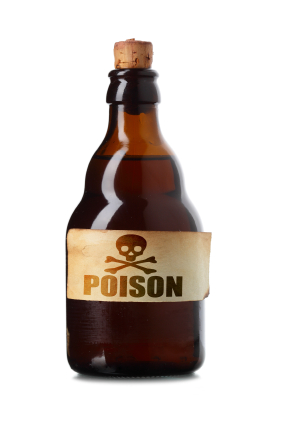
If you eat enough silver, you will turn blue, but it probably won’t kill you.
In the 1920s, you could buy energy drinks and cosmetics containing radium. Because of its beneficial effects on tumors, it was believed to be healthy.
Arsenic was once known as “the inheritance powder”, because it was so commonly used to eliminate relatives who stayed alive too long.
In the 1930s the poison thallium was used in depilatory creams, because of its excellent ability to make hair fall out, but also because of its ability to lend a beautiful pale luster to the skin.
These are just a few of the fascinating facts and stories you can find in “The Poisoner’s Handbook”, by Deborah Blum
Continue reading “Poisoners and Scientists”Seeing the Potential
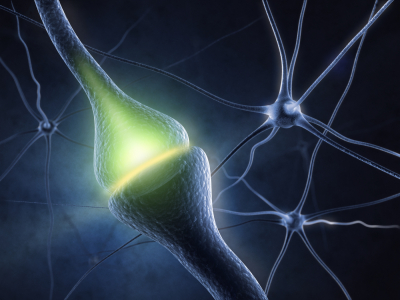 I had never heard of Halorubrum sodomense until a few days ago. It’s name describes it pretty well, it is a salt-tolerant (Halophilic) organism that contains the red-colored photosynthetic pigment archaerhodopsin, and it was originally isolated from the region of Sodom near the Dead Sea. It’s an organism that is well-known only to those with reason to study it. Many of the rest of us will never have cause to say its name, or to even remember it, and may even occasionally wonder why it is studied at all.
I had never heard of Halorubrum sodomense until a few days ago. It’s name describes it pretty well, it is a salt-tolerant (Halophilic) organism that contains the red-colored photosynthetic pigment archaerhodopsin, and it was originally isolated from the region of Sodom near the Dead Sea. It’s an organism that is well-known only to those with reason to study it. Many of the rest of us will never have cause to say its name, or to even remember it, and may even occasionally wonder why it is studied at all.
Halorubrum sodomense was in the news recently because a genetically engineered form of its rhodopsin was used to create a method that lights up mammalian neurons as they fire. This exciting development was reported in a paper by Kralj et al, published in the Nov 27 issue of Nature Methods. Continue reading “Seeing the Potential”
Exploiting Bacterial Toxins for Good (Making Lemonade from Lemons?)
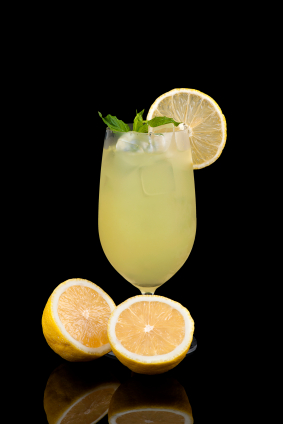 Bacterial exotoxins are scary things. The names of the big three: Tetanus, Anthrax and Botulinum, are sufficient to evoke fear and conjure up images of agony, paralysis, mass hysteria, and permanently frozen Hollywood faces. The worst toxin stories are hard to forget. I can still remember the gruesome textbook case studies that accompanied my bacteriology college lectures. There were the home-canning-gone-horribly-awry botulism stories, the historical examples of agonizing tetanus poisonings, and the less lethal but still nasty cases of fast-acting staph toxins delivered to unsuspecting airline passengers in re-heated meals (avoid the ham sandwiches!). It’s all coming flooding back to me.
Bacterial exotoxins are scary things. The names of the big three: Tetanus, Anthrax and Botulinum, are sufficient to evoke fear and conjure up images of agony, paralysis, mass hysteria, and permanently frozen Hollywood faces. The worst toxin stories are hard to forget. I can still remember the gruesome textbook case studies that accompanied my bacteriology college lectures. There were the home-canning-gone-horribly-awry botulism stories, the historical examples of agonizing tetanus poisonings, and the less lethal but still nasty cases of fast-acting staph toxins delivered to unsuspecting airline passengers in re-heated meals (avoid the ham sandwiches!). It’s all coming flooding back to me.
So, a healthy respect for bacterial toxins is not a bad thing. The worst ones are highly potent and lethal, others may be less potent but are still capable of delivering effects from temporary misery to long-lasting debilitation. But it’s not all bad news. As any microbiology student knows, studies of bacterial toxins have led to some of the most significant advances in the history of medicine–the most well-known example being the development of vaccines based on denatured, inactive forms of toxins. Tetanus and diphtheria are the classic examples where knowledge of the properties of the toxin itself proved to be the key to developing treatment strategies. Continue reading “Exploiting Bacterial Toxins for Good (Making Lemonade from Lemons?)”
A New Method that Marks Proteins for Destruction
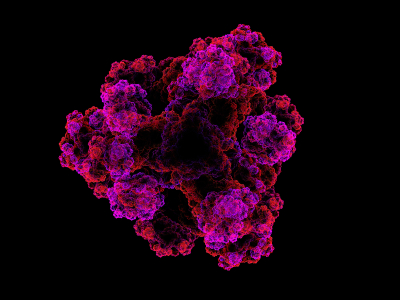 The ability to manipulate genes and proteins and observe the effects of specific changes is a foundational aspect of molecular biology. From the first site-directed mutagenesis systems to the development of knockout mice and RNA interference, technologies for making targeted changes to specific proteins to eliminate their expression or alter their function have made tremendous contributions to scientific discovery.
The ability to manipulate genes and proteins and observe the effects of specific changes is a foundational aspect of molecular biology. From the first site-directed mutagenesis systems to the development of knockout mice and RNA interference, technologies for making targeted changes to specific proteins to eliminate their expression or alter their function have made tremendous contributions to scientific discovery.
A recent paper highlights a novel application of HaloTag technology to enable the targeted destruction of specific HaloTag fusion proteins in vivo. The paper, published online in the July issue of Nature Chemical Biology, details a promising new method with application for validation of potential drug targets by specific in vivo inhibition, and for studying the function of specific genes in organogenesis or disease development. Continue reading “A New Method that Marks Proteins for Destruction”
